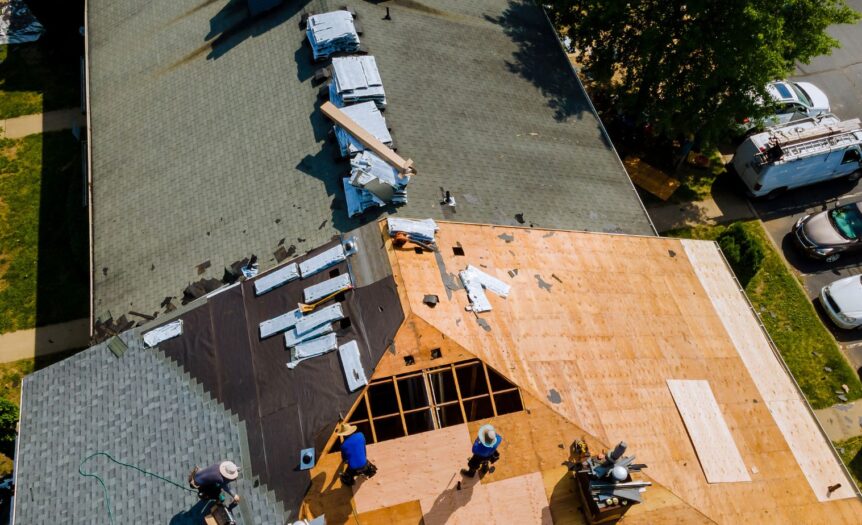Key Takeaways
- Durable roofing materials can significantly extend the lifespan of your roof.
- There are various types of roofing materials, each with its advantages.
- Choosing the suitable material involves understanding your climate and maintenance capabilities.
- To make well-informed choices concerning roofing materials, confer with specialists.
When building or renovating your home, choosing roofing materials is paramount. Your roof is the first line of defense against the elements, and selecting a durable material means less maintenance and greater longevity. Working with a reputable Bergen County roofing company can help you make the best choices for your needs. This article explores different roofing materials that offer durability and long-lasting results, providing you with the necessary knowledge to make an informed decision. Whether you’re dealing with the sweltering heat of summer, the icy grips of winter, or the heavy rains of spring, the suitable roofing material can protect your home and provide peace of mind. Not only does a durable roof save money by reducing the need for frequent repairs, but it also enhances your home’s overall safety and energy efficiency.
Types of Durable Roofing Materials
There are various durable roofing materials to consider, each with its benefits. Here are some of the most popular choices:

- Asphalt Shingles: Asphalt shingles are suitable for most climates, reasonably priced, and simple to install. Because they are composed of fiberglass and asphalt, they offer a decent mix of affordability and longevity. Furthermore, architectural shingles, which provide improved aesthetics and weather resistance, are a product of recent innovations.
- Metal Roofing is gaining popularity because of its durability and resilience to harsh weather. It is made of steel, copper, aluminum, and other materials and has a 50-year lifespan. In addition, it can reflect solar radiation heat and is resistant to fire, both of which save cooling expenses.
- Clay Tiles offer excellent durability and a unique aesthetic appeal. They are heavy and can withstand harsh weather conditions. They are also resistant to fire, insects, and rot, making them a long-lasting option. However, ensuring your home’s structure can support them is essential due to their weight.
- Slate: Slate roofing is highly durable and can last up to a century, but it can be more expensive. It is known for its natural beauty and durability. Despite the higher initial cost, its longevity and minimal maintenance requirements often justify the investment.
- Wood Shingles: Provides natural insulation but requires regular maintenance to prevent rot. Wood shingles offer a classic and rustic look, but they need treatment to withstand moisture and prevent insect infestations. When properly maintained, wood shingles can last up to 30 years.
Factors to Consider When Choosing Roofing Materials
- Climate: The material’s resistance to local weather conditions is crucial. For instance, metal roofing is excellent in areas prone to high winds and heavy snow. Conversely, clay tiles might be more suitable for regions with hot climates due to their natural cooling properties. Understanding your local climate is the first step toward choosing a suitable material.
- Budget: Think about both the initial cost and long-term maintenance expenses. While asphalt shingles might be more affordable upfront, metal or slate roofs offer cost savings over time due to their durability. Balancing immediate costs with future savings is vital for making a financially sound decision.
- Architectural Style: Certain materials better match specific architectural styles. For example, clay tiles are more suited to Mediterranean-style homes, while slate can enhance colonial or Victorian designs. Your choice of material should complement your home’s overall aesthetics, adding to its curb appeal.
- Maintenance: Evaluate how much work you will put into maintaining your roof. Some materials, like metal and slate, require minimal upkeep, while others, such as wood shingles, need regular maintenance. Consider your lifestyle and how much effort you will invest in roof care.
Benefits of Using Durable Roofing Materials
Choosing durable materials for your roof from a reputable New Jersey roofing company comes with several advantages:
- Longevity: High-quality materials can last decades, reducing the need for frequent replacements. This longevity saves money and reduces the inconvenience of constant roof repairs and replacements.
- Cost-Efficiency: The long-term savings on maintenance and replacements can outweigh the higher initial cost. Durable roofing might result in cost savings by requiring less maintenance over time.
- Energy Efficiency: Materials like clay tiles and metal offer superior insulation and lower energy expenses. By reflecting sunlight, they help keep your house cooler in the summer and lighten the strain on your air conditioning system.
- Enhanced Protection: Your home remains safeguarded against severe weather, minimizing damage risks. A durable roof can withstand harsh conditions, protecting your home’s structure and contents from potential damage.
For example, in hurricane-prone areas, materials like metal and slate are preferred for their ability to resist high winds and impact. Making the right material choice can give you peace of mind that your roof can withstand natural disasters.
Research Data and Statistics
According to National Roofing Contractors Association research, asphalt shingles are found on over 75% of American homes because they are inexpensive and straightforward to install. While initially more expensive, metal roofs have become popular due to their long lifespan and minimal maintenance requirements. These materials are chosen not only for their performance but also for their cost-effectiveness over time.
Additionally, a Federal Alliance for Safe Homes report highlights that homes with metal roofing are more likely to withstand severe weather events, making them a preferred choice in hurricane-prone regions. The report emphasizes the importance of selecting a roofing material that can offer maximum protection, especially in areas susceptible to extreme weather conditions. When selecting roofing materials, consider durability, cost, and your home’s needs.
In addition to making long-term financial savings, selecting a material that provides durable protection will also guarantee the security and comfort of your house. Consult with roofing experts to make the best choice tailored to your situation. Investing in a quality roof today can provide lasting benefits for years, making it a key component in maintaining and enhancing your home’s value.







